Picture this: You're hovering over a stunning coral reef, the current starts to pick up just a bit more than expected.
Your dive buddy signals they're feeling the drag. Or maybe you're exploring a sprawling wreck, knowing there's an incredible section just a few hundred meters further, but your bottom time and air are precious. Or perhaps you're loaded down with camera gear, fighting to stay steady for that perfect shot. What's the secret weapon that transforms these scenarios from challenging to effortless? A truly adaptable Diver Propulsion Vehicle (DPV).
Forget just "going faster." The real magic lies in a DPV that molds itself to your dive, your gear, and your underwater playground. It's not about being the absolute fastest or the deepest-diving machine (though those are nice perks!). It's about versatility. It's about having one trusty companion that seamlessly transitions from a tropical reef safari to a chilly freshwater cave, from carrying heavy camera rigs to simply giving your legs a break on a long surface swim back to the boat.
So, what makes a DPV the "Most Adaptable"? Let's dive in and uncover the key ingredients.
Beyond Speed: Why Adaptability is Your DPV's Superpower
Think of your ideal DPV not just as a motor, but as the ultimate underwater utility player. A rigid, one-trick pony might be great for a specific mission, but for most divers exploring varied environments and tasks, flexibility reigns supreme. An adaptable DPV:
- Saves You Money (Long-Term): One device handles multiple roles instead of needing specialized units.
-
Saves Space & Weight: Crucial for traveling divers or those with limited storage.
-
Boosts Confidence: Knowing your gear can handle unexpected conditions or changing plans is priceless.
-
Maximizes Every Dive: From effortless reef cruising to supporting technical endeavors, it unlocks more possibilities.
-
Grows With You: As your diving interests evolve (photography, deeper wrecks, caves), your DPV adapts alongside.
The Adaptability Checklist: What Truly Matters
Finding the "most adaptable" isn't about picking the shiniest model. It's about scrutinizing features through the lens of real-world diving flexibility:
1. Power & Endurance: The Heartbeat of Versatility
-
Runtime is King (and Queen): Raw speed is useless if the battery dies halfway. Look for units offering long runtimes at usable cruising speeds (typically 1.5 - 2.5+ hours on a medium setting). This endurance is fundamental for exploring larger sites, fighting currents, or simply enjoying longer dives without range anxiety.
-
Variable Speed Control: A simple on/off switch? Forget adaptability. You need fine-grained speed control, often via a trigger or dial. Why? Gentle maneuvering near delicate coral requires snail-like pace; fighting a current or covering open ground needs a solid boost; maintaining position for photography demands precision. It should feel like an extension of your hand.
-
Battery Tech & Swappability: Lithium-ion (Li-ion) batteries are the current standard for good reason: higher energy density, lighter weight, no memory effect. Crucially, swappable batteries are a huge adaptability plus. Carry a spare (or two!) in your save-a-dive kit for multi-dive days or extended explorations. Hot-swapping capability underwater (on some advanced models) is the ultimate flexibility hack.
2. Buoyancy & Trim: Mastering the Weightless Dance
This is often overlooked but critical for true adaptability:
-
Neutral or Slightly Negative: The best DPVs are designed to be neutrally buoyant or slightly negative when the battery is installed. Why? You don't want it acting like a lead weight or a runaway balloon. It should sit comfortably in the water column without constant input.
-
Trim Tabs or Adjustable Weight Systems: Can you fine-tune its attitude? Small trim tabs (like little underwater rudders) or even movable weights allow you to adjust if it pulls slightly nose-up or nose-down. This ensures effortless towing in a streamlined position, regardless of your own trim or added gear.
-
Hands-Free Operation Potential: While holding it is common, the ability to mount it (more on that next) means its inherent buoyancy and trim directly impact your overall stability underwater.
3. Mounting & Carrying Options: Hands-Free Freedom
This is where adaptability truly skyrockets:
-
Integrated Mounting Points: Look for sturdy D-rings, rails, or specific slots designed for clipping the DPV to your BCD harness using boltsnaps or carabiners. This is the gold standard for technical diving, cave diving, or when you need both hands free (photography, mapping, deploying a DSMB).
-
Camera Tray Compatibility: Many versatile DPVs offer optional brackets or have designs that easily integrate with popular underwater camera tray systems. Imagine smoothly gliding while keeping both hands on your camera controls!
-
Comfortable Hand Grips: When you do want to hand-carry it (reef tours, fun diving), ergonomic, comfortable grips that work with or without thick gloves are essential. It shouldn't feel awkward or strain your wrist after 10 minutes.
-
Travel Handles: Sturdy handles make carrying it on the boat, shore entry, or through airports significantly easier.
4. Size, Weight & Portability: Your Travel Buddy
A super powerful DPV is useless if it's too cumbersome to travel with or drag around on a small boat.
-
Weight (Out of Water): This impacts travel baggage fees and your back! The most adaptable units strike a balance between power/endurance and manageable weight (often 6-12 kg / 13-26 lbs including battery).
-
Dimensions: Can it fit in standard dive luggage? Does it have a relatively streamlined shape? Compactness is a major plus for adaptability across different travel scenarios.
-
Ease of Breakdown: Can you easily remove handles or parts for packing? Is the battery quick to access and remove (often required for air travel)?
5. Durability & Environmental Resilience: Built for Anything
Adaptability means handling whatever the ocean (or lake, or cave) throws at you:
-
Asiwo U1:A rising star offering impressive adaptability at a more accessible price point. Features a streamlined design with good power output (250W motor), adjustable buoyancy via removable weights, and a clever quick-release handle system that converts between handheld and BCD-mounted configurations. The 90-minute runtime (with optional extended battery) and 100m depth rating make it surprisingly capable for recreational and light technical diving.
-
Construction: Aerospace-grade aluminum (like 6061-T6) is common and excellent – strong, corrosion-resistant, and relatively lightweight. High-quality plastics are also used effectively.
-
Sealing & Depth Rating: Look for robust O-ring seals and a depth rating that comfortably exceeds your typical diving (e.g., 100m/330ft+ is common and versatile for most rec/tech diving). This ensures reliability whether you're shallow reef diving or exploring deeper wrecks.
-
Saltwater & Freshwater Performance: It should perform flawlessly in both environments without special adjustments beyond basic rinsing.
6. Handling & Maneuverability: Grace Under Pressure
Power is nothing without control:
-
Balanced Design: A well-balanced DPV won't twist or torque excessively in your hand, making it easier to control, especially one-handed.
-
Responsiveness: How quickly does it react to speed changes? Smooth acceleration and deceleration are key for precise maneuvering around obstacles or in confined spaces.
-
Stability: Does it track straight, or does it wander? Good stability reduces fatigue and improves control, especially when towing.
Real-World Scenarios: Adaptability in Action
Let's see how these features play out in actual diving situations:
-
The Tropical Reef Explorer: Long runtime covers vast reef systems. Variable speed handles gentle cruising and mild current bursts. Neutral buoyancy and good trim make it effortless to hold. Compact size fits on liveaboards. Rinses easily after saltwater dives.
-
The Wreck Enthusiast: Power and endurance allow penetration and circumnavigation of large wrecks. Hands-free mounting keeps you streamlined and hands available for lines or lights. Good depth rating is essential. Durable construction handles potential scrapes.
-
The Underwater Photographer/Videographer: Hands-free mounting (on BCD or tray) is essential. Precise speed control allows for smooth, stable camera movements. Neutral buoyancy prevents it from affecting your own trim. Enough power to move you plus heavy camera rigs.
-
The Tech/Cave Diver: Hands-free mounting is non-negotiable. Neutral/slightly negative buoyancy and perfect trim are critical for team efficiency and decompression stops. Swappable batteries are vital for long dives. High depth rating and extreme reliability are paramount.
-
The Traveling Diver: Manageable weight and compact dimensions fit in luggage. Swappable batteries comply with airline regulations (lithium limits). Durability stands up to baggage handling. Performs equally well in diverse locations.
Contenders for the "Most Adaptable" Crown
While "most adaptable" can depend on your specific blend of needs, several models consistently rise to the top due to their balanced feature sets:
-
Suex XK / XK1: Often hailed as a benchmark. Excellent balance of power, runtime (especially with larger battery options), superb hands-free mounting (via integrated rails), very good trim, proven durability, and manageable size/weight. A true workhorse across many disciplines.
-
Genesis Blacktip: Known for its innovative design, modularity (easy battery swaps), very good power-to-weight ratio, strong mounting options (including camera trays), and user-replaceable parts. Its travel-friendliness is a major plus.
-
SubGravity S1 Navigator: Focuses on simplicity, reliability, and excellent value. Offers solid performance, good runtime, effective trim adjustment, and straightforward mounting. A great choice for divers wanting adaptable performance without excessive complexity or cost.
-
Dive Xtras BlackTip Tech / Travel: Designed explicitly around adaptability. The modular system allows swapping battery tubes (different capacities), handles, and nose cones. Excellent mounting options, good power, and designed for easy maintenance. The "Travel" version emphasizes compactness.
Beyond the Big Names: Key Considerations
-
Battery Ecosystem: Does the manufacturer offer different capacity batteries? How expensive/easy are replacements? This impacts long-term adaptability.
-
Serviceability & Support: Can you get parts? Is the manufacturer known for good customer service? A versatile DPV is a long-term investment.
-
User Interface: Simple controls (like a reliable trigger or dial) are better underwater than complex menus. A clear battery indicator is crucial.
The Adaptability Sweet Spot: Balancing Your Needs
There's rarely a single "perfect" DPV for everyone. Finding your most adaptable unit means honestly assessing your diving:
-
What's your PRIMARY use? (Reef fun, wreck diving, photography, tech/cave, travel?)
-
What's your SECONDARY use? (You might focus on reefs but dream of wrecks!)
-
Do you NEED hands-free operation? (Essential for tech/cave/photo; nice-to-have for others).
-
How important is travel weight/size? (Liveaboard vs. flying budget airlines).
-
What's your budget? (Adaptability features often come at a premium).
Investing in Freedom: The Value of True Adaptability
A top-tier, adaptable DPV is a significant investment, often ranging from $2,000 to $5,000+. It's not a casual purchase. However, when you weigh it against:
-
The cost of multiple specialized units
-
The frustration of gear that limits your dive instead of enhancing it
-
The priceless value of extending your range, conserving energy, and accessing incredible underwater experiences effortlessly
it becomes clear that this investment buys unparalleled underwater freedom. It's buying the ability to say "yes" to more dives, more exploration, and more pure enjoyment beneath the waves.
Conclusion: Your Ultimate Underwater Ally Awaits
The quest for the "Most Adaptable Diver Propulsion Vehicle" isn't about finding a mythical unicorn. It's about identifying the machine that best disappears into the background, becoming a seamless extension of your dive plan.
It's the DPV that effortlessly transitions from gliding over vibrant coral gardens to providing rock-steady thrust while you frame the perfect shot, from exploring the caverns of a sunken freighter to simply making that long surface swim back to the boat feel like a breeze.
Prioritize endurance, fine control, neutral buoyancy, robust mounting options, manageable size/weight, and proven durability.
An adaptable DPV isn't just a gadget; it's a force multiplier. It conserves your energy, expands your horizons, and fundamentally changes how you experience the underwater world. It transforms challenging conditions into manageable ones and opens doors to adventures that might otherwise be out of reach.
When you find that perfect match – that versatile underwater wingman – you'll wonder how you ever dived without it. The ocean rewards those who move with it, and the right DPV gives you that graceful, powerful, adaptable motion. Now, go find yours.
FAQs
Q: I travel a lot by plane. What's the biggest adaptability challenge for a DPV?
Weight and battery regulations are key. Look for models under ~10kg (22lbs) total weight and ensure they use airline-approved swappable Li-ion batteries (usually under 100Wh). Check specific airline rules!
Q: How important is hands-free mounting really if I'm not a tec diver?
It's more important than you might think! Even for photography, deploying a DSMB in current, or just wanting to swim freely for a while, hands-free operation is a huge boost to convenience and versatility. It transforms how you use the DPV.
Q: Can an "adaptable" DPV still be powerful enough for strong currents?
Absolutely! While pure speed demons exist, the most adaptable models (like the Suex XK or Genesis Blacktip) offer excellent power and torque for fighting currents. Their variable speed control lets you apply just the right amount of thrust efficiently.
Q: How long do DPV batteries typically last (in years, not per dive)?
With proper care (avoiding full discharge, storing ~50% charge, not exposing to extreme heat), quality Li-ion DPV batteries can last 3-5 years or 300-500+ charge cycles before significant capacity loss. Swappable batteries extend the unit's overall lifespan.
Q: Is a slightly negative DPV better than a neutral one?
For hands-free mounting, slightly negative is generally preferred. When clipped off, it stays securely positioned against your gear without floating up. A perfectly neutral one might need securing. For hand-holding, neutral is ideal. Good trim adjustment compensates for either.
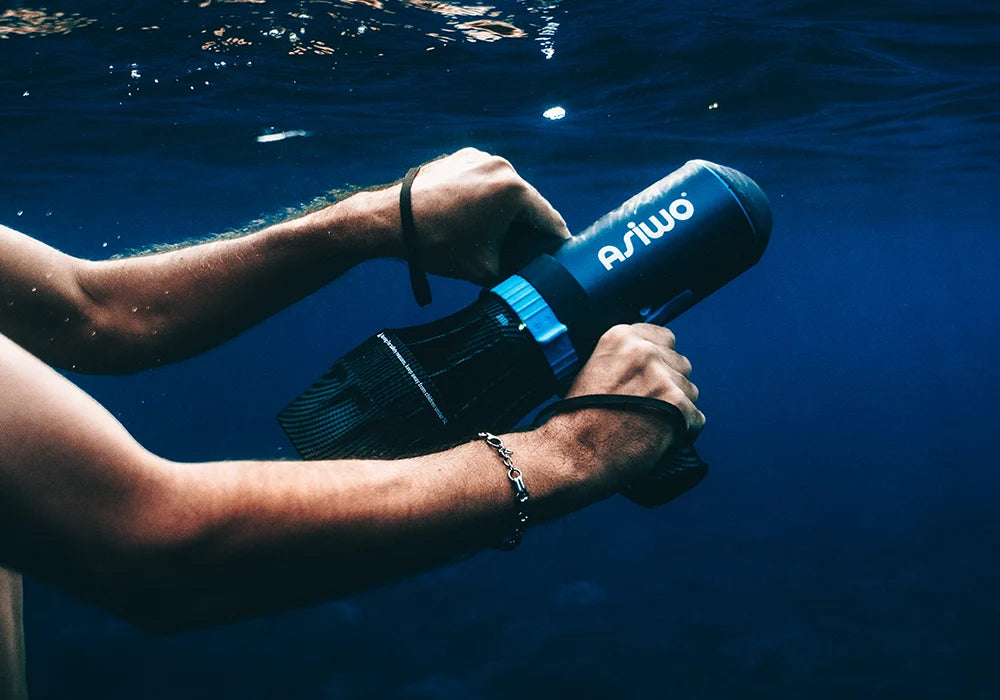




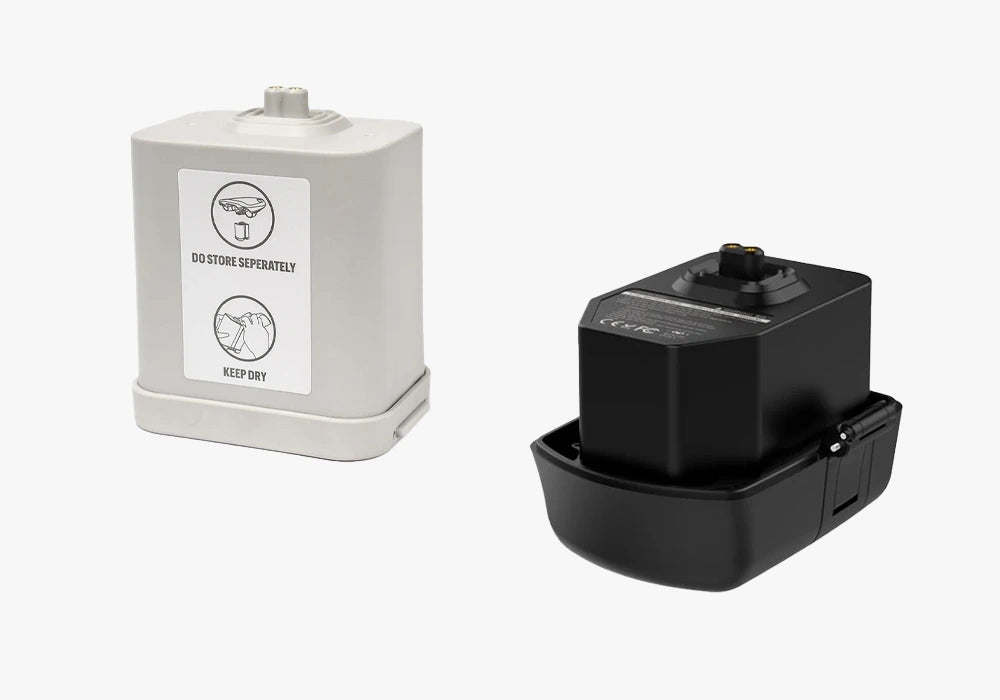




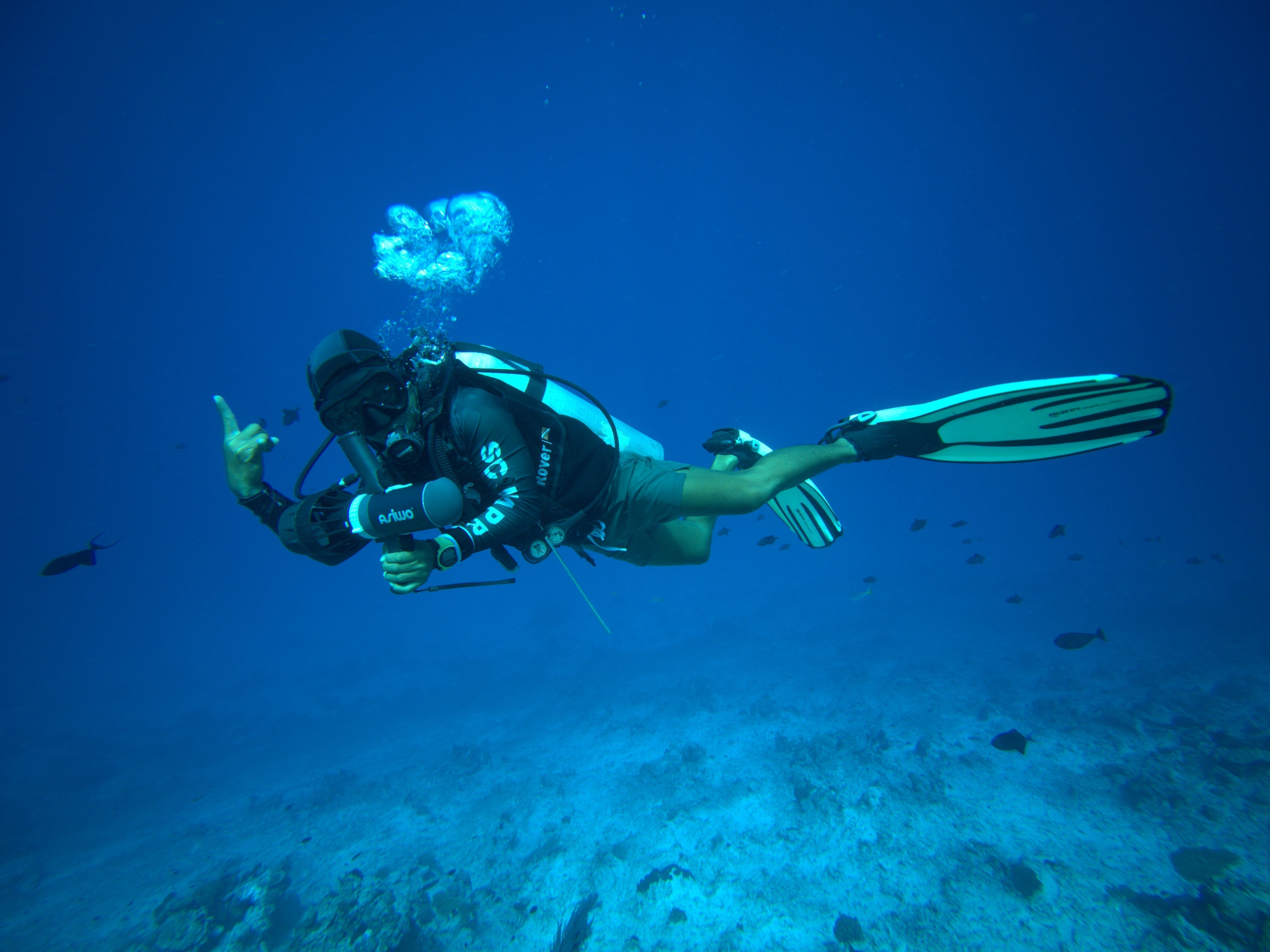
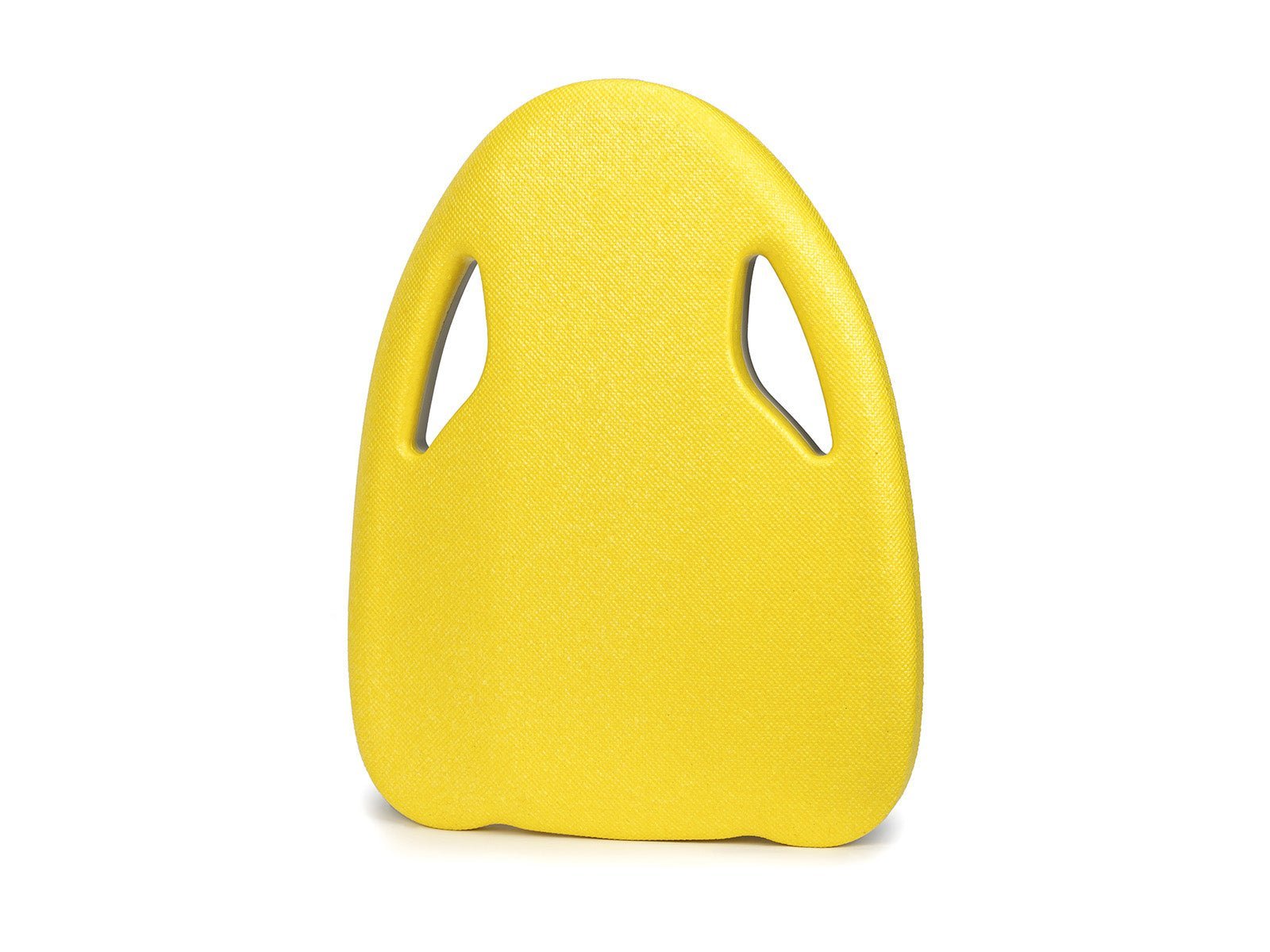
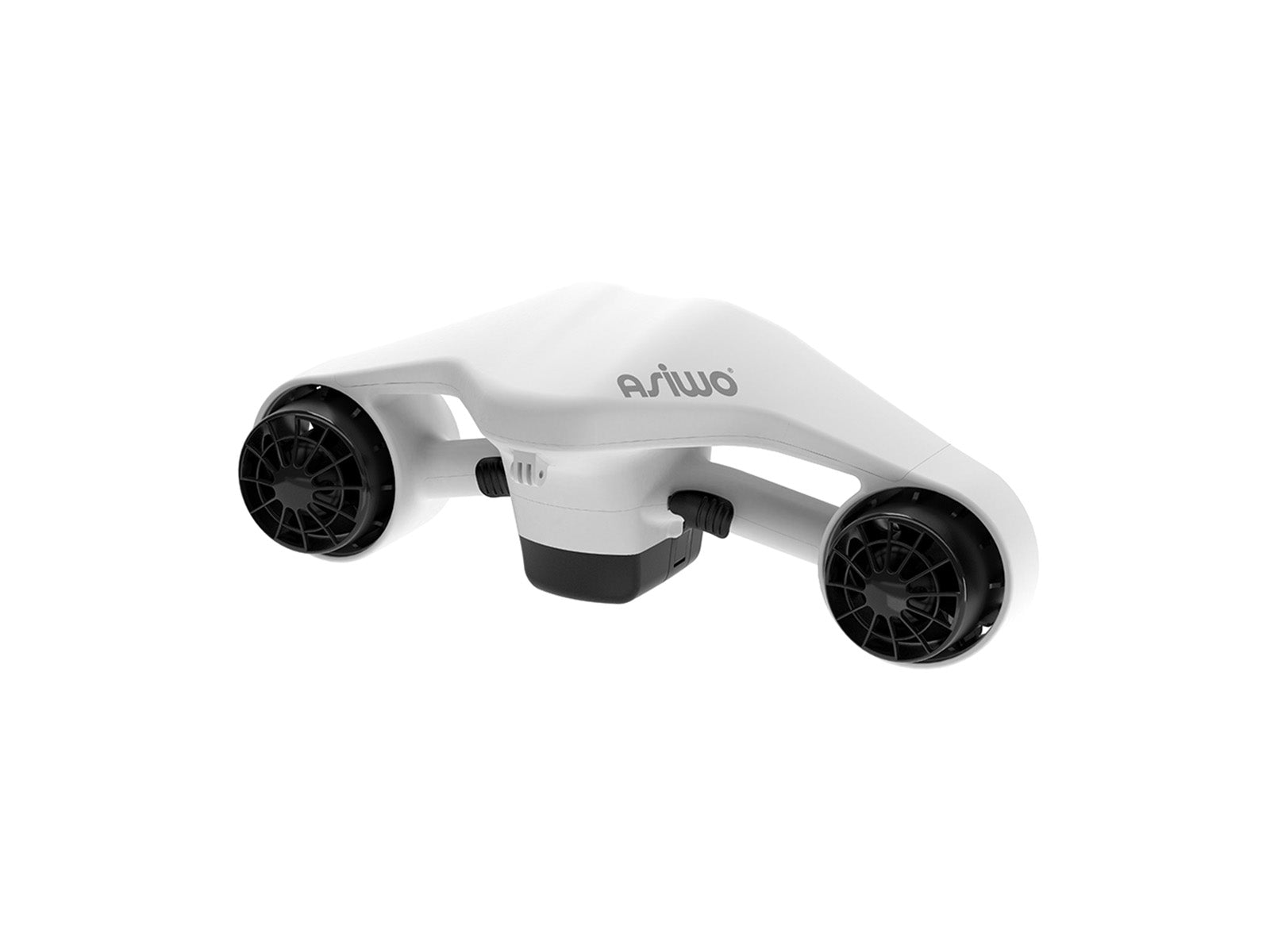
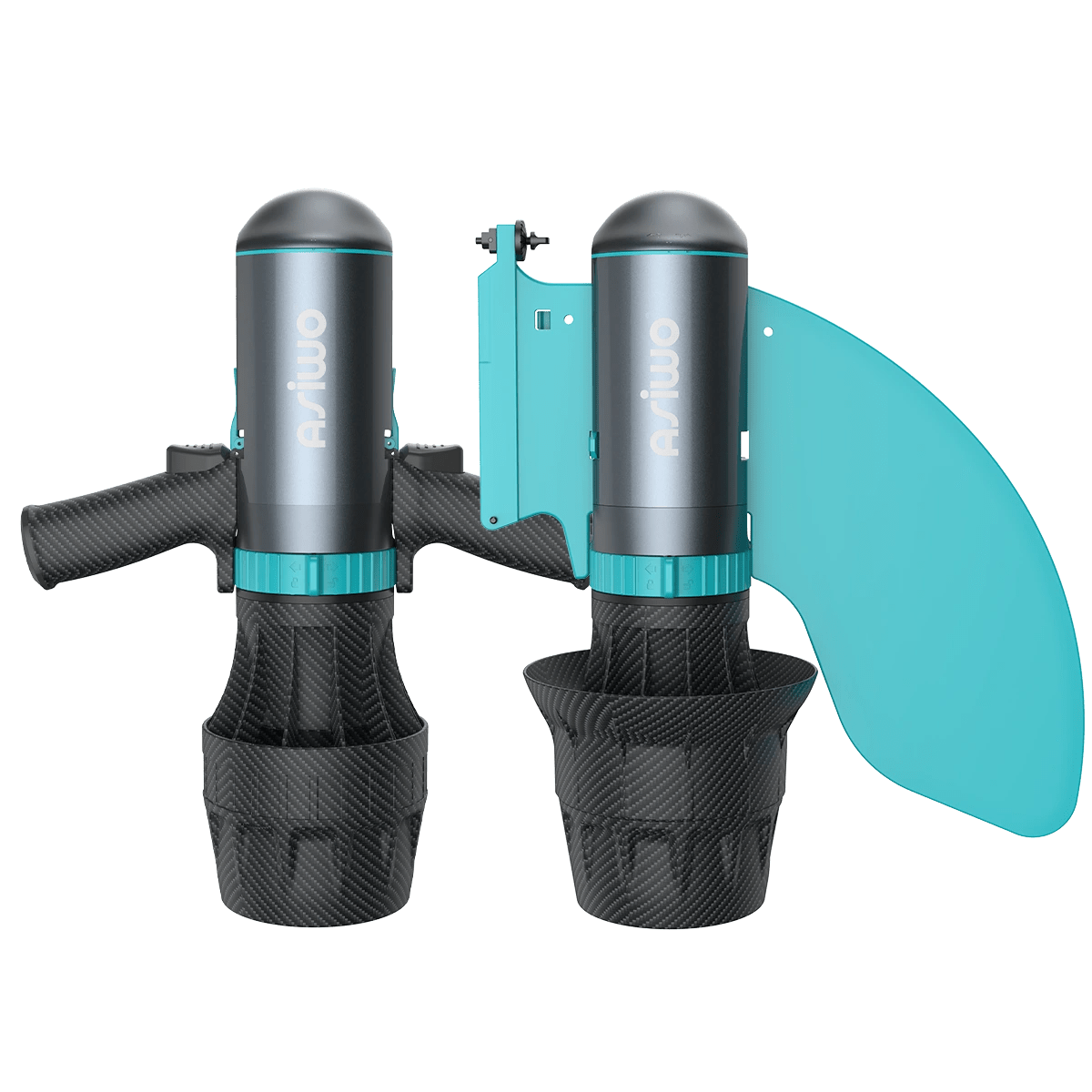




Lascia un commento